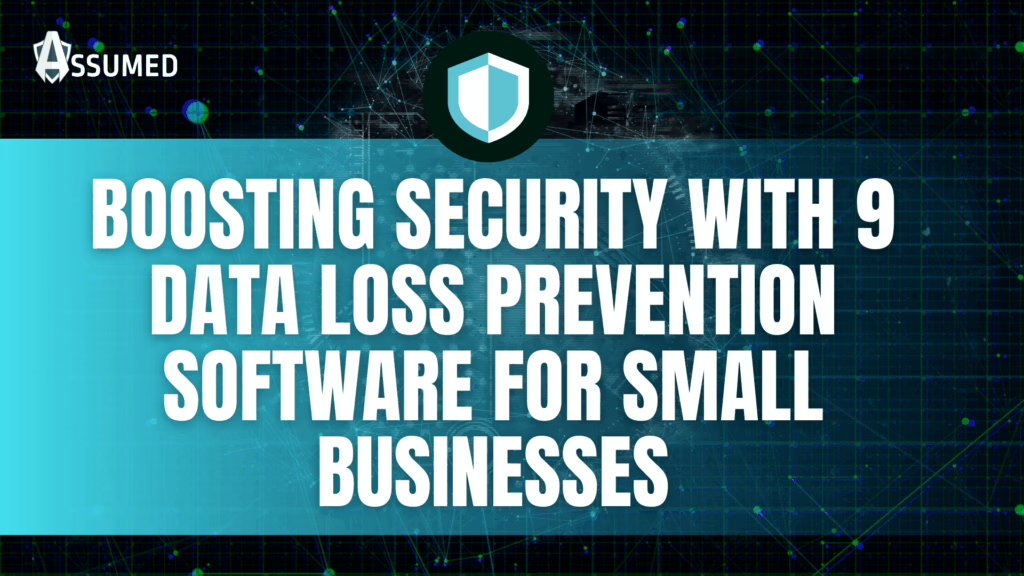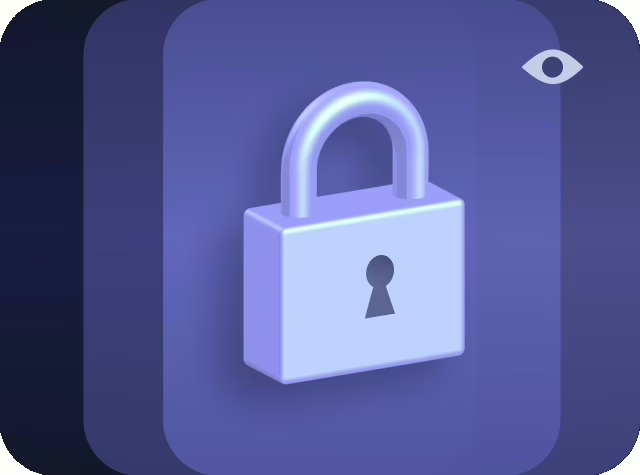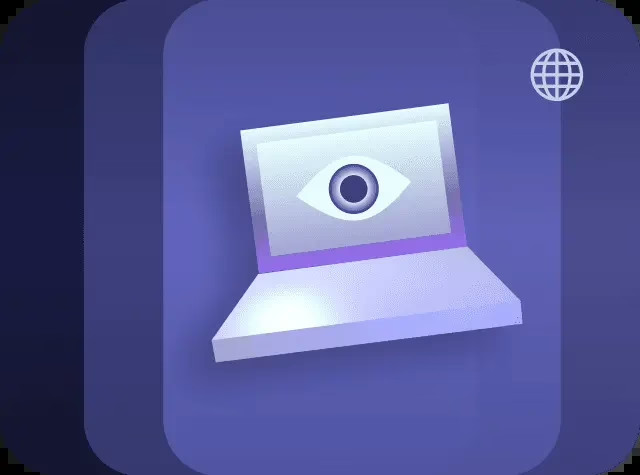What is Data Loss Prevention Software?
Data loss prevention software refers to specialized security tools that detect and prevent unauthorized access, use, transfer or deletion of sensitive information. These solutions monitor, detect and block potential data breaches, from external threats or internal negligence.

Table of Contents
Key Functions of Data Loss Prevention Software
Modern data loss prevention software typically performs several functions such as:
Content Inspection
Content inspection is a fundamental capability of Data Loss Prevention software, examining data in all states, in use on endpoints, in motion across networks and at rest in storage systems. These systems use sophisticated techniques including pattern matching, fingerprinting and machine learning to identify sensitive information such as credit card numbers, personal health information, intellectual property and confidential business data regardless of where it resides.
Policy Enforcement
Policy enforcement mechanisms allow organizations to apply predetermined security rules based on content type, context, user roles and access methods. Once sensitive data is identified, these policies determine what actions are allowed, restricted or blocked, such as copying, sharing, printing or transferring specific information, for consistent protection across the organization.
User Activity Monitoring
User activity monitoring creates visibility by tracking how authorized users interact with protected data. Data Loss Prevention software should maintain detailed audit trails that record who accessed what information, when they accessed it, and what actions they took. This continuous monitoring helps security teams detect unusual patterns or behaviors that might indicate a breach in progress or an insider threat scenario.
Prevention and Remediation
Prevention and remediation capabilities provide immediate protection when potential violations occur. Advanced Data Loss Prevention software can automatically implement protective measures such as blocking risky activities, encrypting sensitive content, quarantining suspicious files, or alerting security teams. Many solutions also provide sophisticated incident management tools for efficiently investigating, documenting, and resolving security events.
Compliance Management
Compliance management features are increasingly important as organizations navigate complex regulatory landscapes. Modern Data Loss Prevention software include specialized tools to help organizations meet requirements like GDPR, HIPAA, CCPA, PCI DSS and various industry-specific mandates. These features provide the documentation, reports, and controls necessary to demonstrate due diligence during compliance audits and reduce the risk of penalties.

Why Your Business Needs Data Loss Prevention Software in 2025
Rising Threats
Cyber threats have become increasingly sophisticated, with attackers developing new methods to access sensitive information. Data loss prevention software provides an important defense layer, helping identify vulnerabilities before they can be exploited.
Remote Work Security Challenges
With remote and hybrid work models now permanent fixtures in many organizations, the traditional security perimeter has dissolved. Data Loss Prevention software can help secure data regardless of where employees access it, ensuring consistent protection across distributed workforces.
Regulatory Compliance Requirements
As data privacy regulations evolve globally, businesses face growing compliance challenges. Data Loss Prevention software helps maintain compliance by enforcing data handling policies and providing documentation of security measures.
Insider Threat Protection
Not all data breaches come from external hackers. Sometimes, the greatest risk comes from within. Employees can pose significant security risks through malicious intent or simple human error. Data Loss Prevention software helps mitigate these risks through comprehensive monitoring and policy enforcement.
Key Features to Look for in Data Loss Prevention Software
When evaluating Data Loss Prevention software, consider these essential features:
1. Content Discovery and Classification
The foundation of effective DLP is the ability to identify and classify sensitive data. Deep content inspection capabilities enable Data Loss Prevention software to analyze content within files, not just file types or metadata. Advanced systems can recognize sensitive information in hundreds of file formats, including documents, spreadsheets, images and compressed archives, providing comprehensive visibility across your environment.
Practical discovery tools can scan structured and unstructured data across your entire network, from databases to document repositories to email systems. These tools use sophisticated pattern recognition to identify sensitive information using predefined identifiers (credit card numbers or social security numbers) and custom patterns specific to your organization’s proprietary information.
Automated classification systems intelligently categorize data based on content and context, applying appropriate security controls based on sensitivity level. The most effective solutions can map data flows throughout your organization, helping you understand how information moves between systems, users, and external parties, which is needed knowledge for building effective protection strategies.
2. Policy Management and Enforcement
Policy controls form the heart of any effective DLP implementation. Advanced solutions offer granular, context-aware policy creation tools that allow security teams to define how different types of data should be handled based on variables like data type, user roles, department, location and access methods. This flexibility ensures that protection is appropriate to the risk level without unnecessarily hindering productivity.
The most effective Data Loss Prevention software provide multiple enforcement options for different policy violations, from simply logging the activity to issuing warnings, requiring justification, encrypting content or blocking actions entirely. Allowing organizations to balance security needs with business requirements, applying stringent controls to the most sensitive information while using lighter approaches for less critical data. Look for solutions that make it easy to update policies as business requirements or regulations change, with workflow tools for policy review and approval. Leading platforms also offer policy simulation features that let you test new rules before full deployment, minimizing disruption to business operations while maintaining security.
3. Comprehensive Monitoring Capabilities
Effective Data Loss Prevention software must monitor data across multiple channels to provide complete protection. Endpoint protection features monitor data on user devices, including desktops, laptops and mobile devices, controlling how sensitive information can be used, transferred or stored. The best solutions work online and offline, maintaining protection even when devices aren’t connected to corporate networks.
Network monitoring capabilities track data in transit across your organization’s infrastructure, inspecting traffic for sensitive content that might be leaving the organization through email, web uploads, file transfers or other channels. This visibility helps prevent malicious data exfiltration and accidental disclosures before they result in breaches.
Cloud application security has become essential as organizations adopt SaaS platforms. Modern Data Loss Prevention software extend protection to cloud services, monitoring data uploaded to platforms like Office 365, Google Workspace, Salesforce and other cloud storage solutions.
Email security integration provides specialized protection for one of the most common data leakage channels. DLP tools can scan outgoing messages and attachments, preventing sensitive data from leaving via email communications, whether through malicious actions or simple mistakes like misaddressed messages or inappropriate attachments.
4. Incident Response and Remediation
Real-time alerting systems notify security teams immediately when policy violations occur, providing the details needed to assess severity and determine appropriate responses. The most effective solutions include customizable alerting thresholds and notification options to balance security awareness with alert fatigue.
Automated remediation actions can provide immediate protection without waiting for human intervention. Depending on the type and severity of the violation, Data Loss Prevention software can automatically encrypt files, quarantine content, revoke access or take other protective measures when risks are detected. These automated responses significantly reduce the window between detection and protection.
Sophisticated incident investigation tools help security teams understand what happened, how and why. The best solutions provide detailed forensic information and contextual data that help distinguish between malicious activities and honest mistakes. Case management features support the full incident lifecycle, from initial detection through investigation, remediation, documentation and closure, making sure that nothing falls through the cracks.
5. Reporting and Analytics
Comprehensive reporting helps organizations understand their data security posture and demonstrate compliance. Customizable dashboards present metrics easily digestibly, giving security teams and executives visibility into protection status, incident trends and areas requiring attention. These visual tools help transform complex data into actionable security intelligence.
Detailed audit trails document all data interactions for compliance purposes, providing evidence that sensitive information is being properly protected. These records are invaluable during regulatory audits and can help demonstrate due diligence in the event of a security incident. The most effective solutions make generating reports tailored to specific compliance frameworks easy.
Risk analysis capabilities help identify vulnerable areas before breaches occur, highlighting departments, systems or users that may represent elevated risk levels. This proactive approach allows security teams to strengthen protections where needed. Advanced user behavior analytics can identify potential insider threats by detecting unusual patterns that might indicate malicious intent or compromised accounts, enabling early intervention before significant damage occurs.

Implementing Data Loss Prevention Software: Best Practices
Successfully deploying DLP requires careful planning and execution:
1. Start with a Data Risk Assessment
Before implementing any Data Loss Prevention software, conduct a thorough assessment to understand what sensitive data exists in your organization and establish clear objectives beyond general “data protection.” Define whether you’re primarily focused on regulatory compliance, intellectual property protection, preventing accidental data leaks or detecting malicious insider activities, as each objective may require different approaches.
Identify where sensitive information resides across your environment, including structured databases, unstructured file shares, email systems, cloud storage and endpoint devices. This discovery process helps you understand the scope of what needs protection. Map how this data flows between systems and users to identify potential vulnerability points and prioritize protection efforts.
Classify discovered data based on sensitivity levels and business impact to create a foundation for protection policies. This classification framework helps ensure that the most critical assets receive the strongest protections while allowing appropriate business use of less sensitive information. Assess which data presents the highest risk if compromised, considering factors like regulatory requirements, competitive advantage and potential financial or reputational damage from exposure.
2. Take a Phased Approach
Rather than attempting to implement all DLP capabilities simultaneously, begin with monitoring mode rather than enforcement mode. This allows you to understand normal data flows, refine policies and educate users before implementing restrictions that might disrupt business operations. The insights gained during this observation period are invaluable for developing effective policies that balance security with business needs.
Focus initial implementation on the most critical data types and highest-risk channels to deliver quick security wins while building toward comprehensive protection. For many organizations, this means starting with regulated data like payment card information or protected health information, and high-risk channels like email and cloud uploads. As these initial protections prove successful, coverage will gradually expand to additional data types and channels.
Test thoroughly in limited environments before wider deployment to identify and address performance or compatibility issues. Pilot implementations with specific departments or user groups can provide valuable feedback while limiting potential business disruption. Use these pilot deployments to refine policies, adjust sensitivity levels and streamline workflows before rolling out to the broader organization.
Continuously evaluate and adjust your DLP implementation based on results and changing requirements, your business will regularly need to review detection rates, false positives, user feedback and operational impact to fine-tune policies and processes.
3. Focus on User Education
The most sophisticated Data Loss Prevention software will still struggle without user cooperation and understanding. Communicate the purpose and benefits of DLP implementation to all stakeholders, explaining how it protects both the organization and individual employees. Transparency about what is being monitored and why helps build trust and cooperation rather than resistance.
Provide comprehensive training on data handling policies and procedures that explain the organization’s data classification scheme, handling requirements for different types of information and the rationale behind security controls. This education helps employees understand their role in data protection and reduces the likelihood of policy violations caused by a lack of awareness.
Establish clear escalation paths for questions or concerns about DLP policies or blocked actions. Users who understand how to request assistance or policy exceptions for legitimate business needs are less likely to seek workarounds that could create security gaps. Support resources like help desk staff should be well-trained on DLP policies and procedures to provide consistent guidance.
Make data protection a shared responsibility rather than solely an IT function to create a culture of security awareness throughout the organization. Regular communication, recognition of good security practices and visible executive support all contribute to this cultural shift. When security becomes part of everyday work rather than an obstacle to overcome, DLP effectiveness increases dramatically.
4. Integrate with Existing Security Infrastructure
Data Loss Prevention software shouldn’t operate in isolation from your broader security ecosystem. Integration with identity and access management systems allows DLP policies to incorporate user roles and permissions, creating more granular and effective controls.
Leverage integration capabilities to enhance overall protection through coordinated defense. Organizations gain comprehensive visibility and more effective threat detection when Data Loss Prevention software can share information with SIEM platforms, endpoint protection, email security, and cloud access security brokers. These integrations help correlate DLP events with other security data for better threat analysis.
Avoid duplication of efforts across multiple security solutions by understanding the capabilities and limitations of each tool. Some endpoint protection platforms, for example, include basic DLP features that address certain use cases. Understanding what’s already available helps organizations focus their dedicated DLP investment on gaps in current protection.
Consider unified platforms that combine DLP with other security functions when possible. These integrated solutions often provide more seamless operation, consistent policy enforcement and simplified management compared to stand-alone products. As security tool consolidation continues, platforms that address multiple protection needs while maintaining robust DLP capabilities offer compelling advantages.
Top Data Loss Prevention Software Solutions in 2025
While needs vary by organization size and industry, several solutions stand out in today’s market:
For Enterprise Organizations
Enterprise-grade Data Loss Prevention software offers comprehensive protection for large, complex environments.
CyberArk Data Protection Suite provides advanced AI-driven content analysis and strong integration with identity management, making it particularly effective for organizations with complex role-based access requirements. Its machine learning capabilities continually improve detection accuracy while reducing false positives that can impact productivity.
Forcepoint DLP delivers user behavior analytics and cross-channel protection that helps identify potential insider threats before data loss occurs. Its risk-adaptive protection automatically adjusts security controls based on user risk levels. It applies stricter controls where needed while reducing friction for trusted users. The platform’s unified policy management across endpoints, networks, and cloud services simplifies the administration of complex security environments.
Symantec DLP by Broadcom remains a market leader with extensive policy templates and strong cloud service integration. Its mature technology offers one of the industry’s most comprehensive content detection engines, with specialized capabilities for particularly challenging data types like intellectual property and source code. The platform’s depth of experience in regulated industries makes it particularly valuable for organizations with strict compliance requirements.
For Small to Mid-Sized Businesses
Smaller organizations have more accessible options that still provide strong protection.
Digital Guardian Endpoint DLP offers lightweight agents with minimal performance impact, which is ideal for organizations concerned about affecting user productivity. Its cloud-delivered management reduces infrastructure requirements while providing enterprise-grade protection capabilities scaled for mid-market needs.
Trend Micro DLP provides simplified deployment with pre-configured policies that accelerate time-to-protection for resource-constrained security teams. Its integration with Trend Micro’s broader security ecosystem creates comprehensive protection without requiring multiple management consoles. The solution’s template-based approach makes it accessible to organizations without dedicated DLP expertise.
Check Point Data Loss Prevention features easy-to-manage cloud-based administration that reduces operational overhead while maintaining robust protection. Its unified security architecture integrates DLP with threat prevention, providing coordinated defense against data loss and incoming threats. The platform’s simplified policy management suits organizations with limited security resources.
Cloud-Native Solutions
Several specialized options exist for organizations heavily invested in cloud infrastructure.
Microsoft Purview DLP seamlessly integrates with Microsoft 365 environments, providing protection across Exchange, SharePoint, OneDrive, Teams and other Microsoft services. Its native integration eliminates the complexity of third-party connectors while delivering comprehensive visibility and control for Microsoft-centric organizations.
Netskope Cloud DLP specializes in protecting data across cloud services, offering deep visibility into how data moves between cloud applications. Its API-based approach comprehensively covers sanctioned cloud services, while its proxy architecture protects against shadow IT data transfers. The platform’s cloud-native architecture scales effortlessly as organizations expand their cloud footprint.
Nightfall DLP offers API-based scanning for cloud applications and data stores with minimal configuration requirements. Its developer-friendly approach makes it particularly suitable for organizations building custom applications or with unique cloud architectures. The platform’s machine-learning capabilities excel at detecting sensitive data in unstructured contexts, reducing the need for complex pattern definitions.
Measuring ROI from Your Data Loss Prevention Investment
To justify DLP investment and ensure ongoing optimization:
Quantitative Measures
Track metrics such as the number of data loss incidents prevented, providing a direct measure of threat mitigation. Organizations can demonstrate tangible security improvements by comparing pre-implementation incident rates with post-implementation figures. These prevented incidents can be assigned estimated values based on industry breach cost data, creating a financial framework for ROI analysis.
Measure reduction in breach investigation time to quantify operational efficiency gains. Data Loss Prevention software that provides detailed context and forensic information can dramatically reduce the time security teams spend investigating potential incidents. This time savings translate directly to cost savings in security operations while reducing the potential impact of actual breaches through faster response.
Monitor compliance audit success rates and associated cost reductions. Organizations in regulated industries often face significant costs from compliance failures, including both direct penalties and remediation expenses. DLP implementations that improve compliance posture deliver measurable financial benefits through reduced findings, simplified audits, and lower remediation costs.
Calculate time saved on regulatory reporting as another efficiency measure. Many Data Loss Prevention software programs automate aspects of compliance documentation that would otherwise require manual effort. This automation reduces the labor cost associated with maintaining regulatory compliance while improving accuracy and consistency in reporting.
Qualitative Benefits
Consider less tangible but equally important gains like improved security posture and risk reduction. While harder to quantify precisely, these benefits represent real business value through reduced likelihood of costly breaches and associated reputational damage. Executive stakeholders increasingly recognize the value of proactive risk management in protecting organizational value.
Acknowledge enhanced visibility into data flows and usage as a strategic advantage. Many organizations discover that DLP implementation reveals previously unknown aspects of how data moves through their environment. This improved understanding enables better business decisions about information governance, system architecture and process design beyond the immediate security benefits.
Recognize greater confidence in compliance status as valuable for business operations. Organizations with verifiable evidence that sensitive data is adequately protected can operate more safely in regulated environments. This confidence allows for more agile business decisions without fear of inadvertently creating compliance issues.
Improved security awareness among employees is a cultural benefit. Effective DLP programs educate users about data protection, creating a more security-conscious workforce. This heightened awareness extends beyond the specific data types protected by DLP, creating a multiplier effect that improves broader security behaviors throughout the organization.
The Future of Data Loss Prevention Technology
Looking ahead, several emerging trends will shape the evolution of DLP:
AI and Machine Learning Integration
Next-generation Data Loss Prevention software increasingly incorporate advanced AI capabilities that fundamentally transform protection capabilities. Adaptive policy enforcement based on learned normal behavior allows systems to detect anomalies without relying solely on predefined rules. This behavior-based approach identifies suspicious activities that might not trigger traditional content-based policies, providing protection against previously unknown threats.
Another AI advancement is improved detection of previously unknown sensitive data patterns. Machine learning algorithms can identify potentially sensitive information based on contextual factors rather than just matching known patterns. This capability helps protect emerging data types and proprietary information that doesn’t match standard templates for regulated data.
Reduced false positives through context-aware analysis address one of the greatest challenges in traditional DLP implementations. AI-powered systems can distinguish between legitimate business usage and hazardous behavior by understanding the full context of data usage, including user role, business process, timing and related activities. This precision improves security while reducing business disruption and alert fatigue.
Predictive analytics capabilities help identify emerging risks before incidents occur. By analyzing patterns across users, departments and systems, advanced Data Loss Prevention software can highlight areas of increasing risk that merit additional attention. This forward-looking approach enables proactive security adjustments rather than reactive incident response, fundamentally improving protection effectiveness.
Extended Detection and Response (XDR) Convergence
The lines between DLP and other security functions continue to blur as integration with broader threat detection and response frameworks becomes standard. This convergence creates more effective security through coordinated protection, detection and response capabilities. When DLP events can be correlated with other security telemetry, organizations gain a more complete understanding of potential threats.
Unified security visibility across endpoints, networks, and cloud environments eliminates blind spots that attackers might exploit. As DLP capabilities become components of broader security platforms, organizations benefit from comprehensive views of their security posture. This holistic visibility enables better security decision-making and more effective risk management.
Coordinated response capabilities improve incident management effectiveness when DLP is integrated with broader security operations. When a potential data loss event is detected, integrated systems can automatically trigger additional investigation steps, access controls, or other protective measures. This orchestrated response reduces the time between detection and protection.
Simplified administration through unified security platforms reduces operational overhead and improves security consistency. As DLP functionality becomes embedded in broader security solutions, security teams benefit from consolidated policy management, reporting and administration. This integration reduces the expertise barrier that has historically limited DLP adoption, especially in smaller organizations.
Zero Trust Integration
DLP is becoming a crucial component of zero-trust security models, which assume no entity is inherently trusted. Data-centric security approaches protect information regardless of location, applying consistent controls whether data resides on corporate networks, cloud services or remote devices. This location-independent protection is essential as traditional network boundaries continue to dissolve.
Continuous validation of access rights and data handling behaviors aligns DLP with the zero-trust principle of never trusting and always verifying. Modern Data Loss Prevention software continuously assess whether data access and usage remain appropriate based on the current context rather than granting persistent access rights. This dynamic approach provides better protection in today’s rapidly changing business environments.
Integration with identity and access management systems creates more effective and user-friendly protection. By incorporating identity context into DLP policies, organizations can implement controls that adapt to each user’s legitimate data needs while preventing inappropriate access. This integration helps balance security and usability, a factor for DLP success.
Micro-segmentation based on data sensitivity enables more precise protection while supporting business productivity. Rather than applying blanket restrictions, advanced DLP implementations can create granular policies based on specific data elements and their sensitivity. This approach ensures stringent controls protect only the most sensitive information, minimizing business impact.
Taking the Next Step with Data Loss Prevention
In 2025’s complex threat landscape, implementing effective data loss prevention software isn’t just a security best practice—it’s a business imperative. Understanding your organization’s unique data protection needs and selecting the right Data Loss Prevention softwareDLP solution can significantly reduce the risk of costly and damaging data breaches.
Remember that successful DLP implementation requires more than technology. It also needs thoughtful planning, user involvement, and ongoing optimization. With the right approach, your DLP investment will deliver substantial returns in enhanced security and regulatory compliance.
Ready to strengthen your data protection strategy? Assess your current data risks and explore the Data Loss Prevention software that best address your specific needs.


